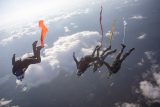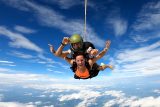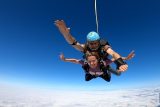Skydiving Licenses and Certifications
Blog
 Posted by: Curtis White
2 years ago
Posted by: Curtis White
2 years ago
Once you’ve completed your first tandem skydive, the possibilities of where you’ll go with the sport are endless! The United States Parachute Association (USPA) issues four categories of skydiving certification: A, B, C, and D. Let’s jump into each skydiving license, what it takes to achieve it, and the perks you gain!
Skydiving License Cost, from AFF to A-License!
Obtaining a skydiving license is an achievable and realistic goal as long as you are wholeheartedly committed to dedicating the time and money it requires.
At Skydive New England, we use the Accelerated Freefall Program (AFF) to guide jumpers from student status to competent skydivers. AFF is a world-renowned way of teaching skydiving. While there is no such thing as an AFF license, you will receive an AFF certification upon completion of the program, indicating you’re ready for solo and coach jumps, and one step closer to your skydiving license!
Our AFF program, from start to finish, costs $3,045+. That probably seems like a lot, but once you see what goes into the skydiving certification cost – including the time committed by your professional instructors; the stringent safety standards we adhere to; the maintenance and upkeep of our gear and aircraft; and fuel – you’ll appreciate why the skydiving license cost is what it is!
We want the freedom of flight to be experienced by as many as possible, so you have the option to pay as you go or pay it all upfront.
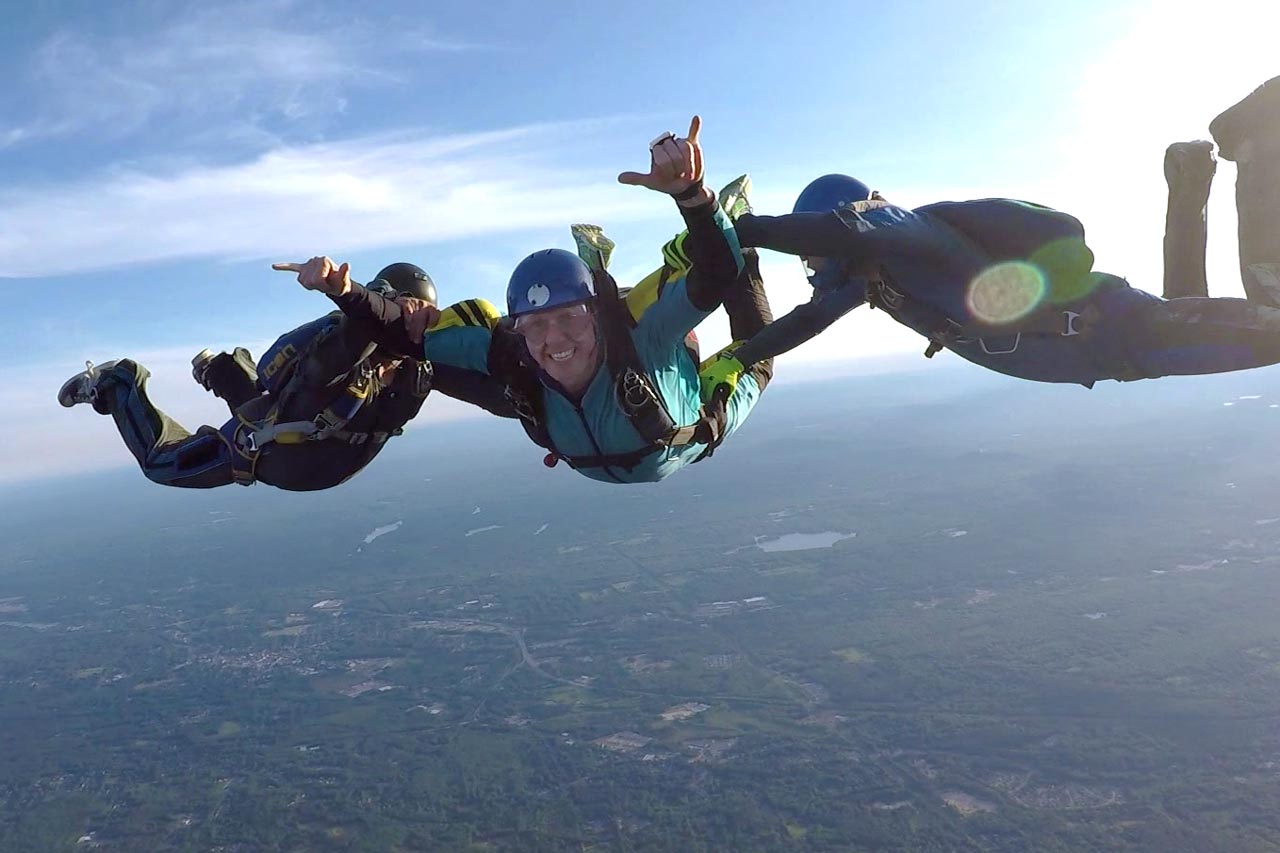
How Long Does a USPA Skydiving License Last?
Skydiving is kind of like riding a bike, once you get the hang of it the muscle memory sticks with you. Each skydiving license has a different expiration date, but once you’re licensed you never have to fully start over. After a predetermined number of days has elapsed since your last jump, you’re required to take refresher training and complete a coach jump:
- A-license: 60+ days since last jump
- B-license: 90+ days since last jump
- C-license: 180+ days since last jump
- D-license: 180+ days since last jump
While currency can be somewhat easily regained, we recommend staying as current as possible. Currency makes you a safer and more well-rounded skydiver!
A-License
What’s Required for a Skydiving A-License?
In order to obtain a USPA A-license, the first of the four skydiving licenses, you must perform a minimum of 25 jumps. During these 25 jumps, you’ll complete skills mandated on the USPA proficiency card (e.g. different canopy maneuvers) and a total of five freefall jumps involving at least two people. After completion of all required skydives, you’ll be able to confidently complete the USPA oral and written exams, get your proficiency card officialized, and receive your unique license number!
What Can I Do After I’m A-Licensed?
Jump with your pals! Once you’ve received the A-license, you’re recognized as a safe skydiver in solo and group settings, from exiting the plane to landing your canopy. You’re able to start exploring different disciplines within the sport and continue to learn.
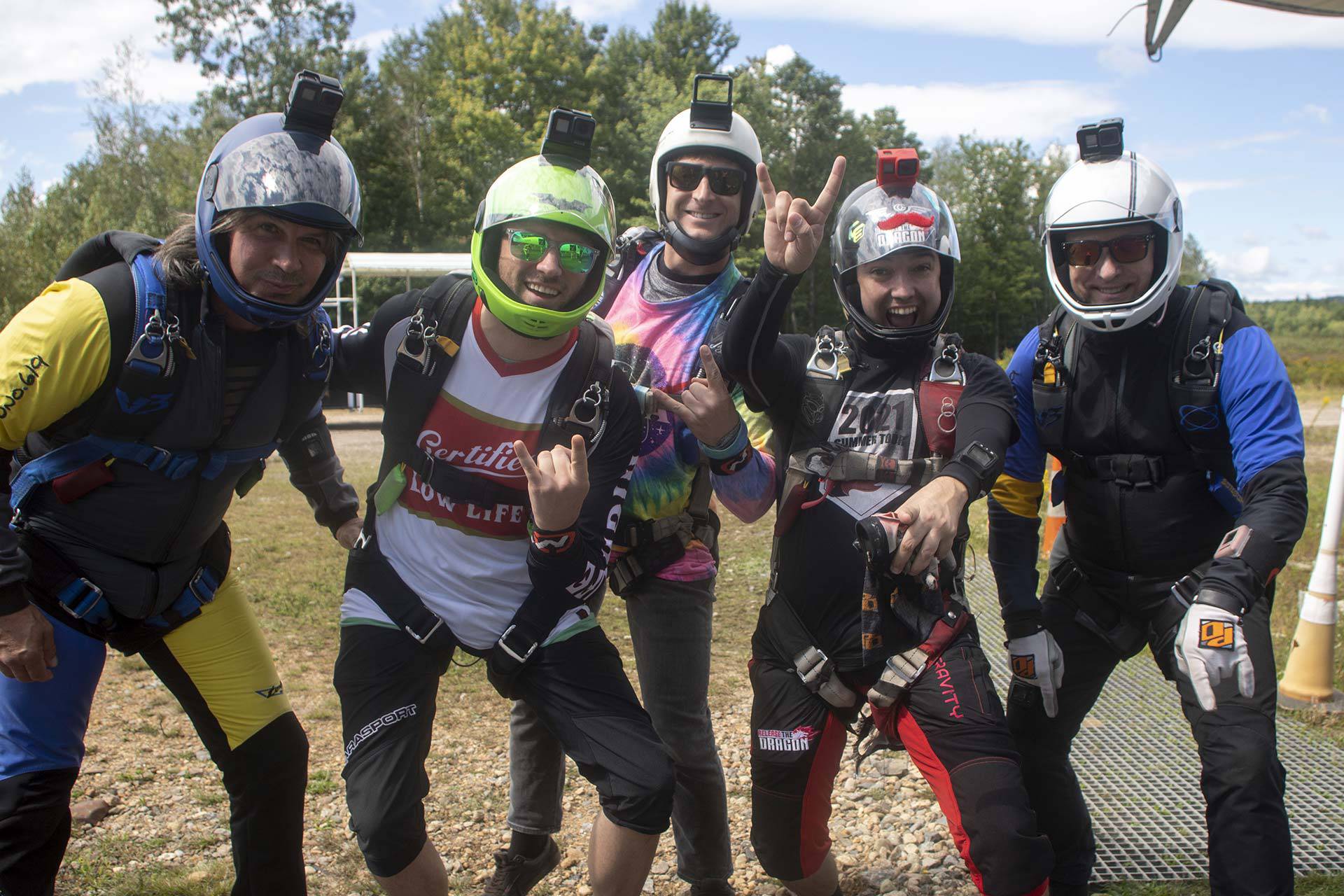
B-License
What’s Required for a Skydiving B-License?
The USPA B-license requirements include proficiency in certain freefall skills and canopy skills, as well as a minimum of 50 jumps. Usually, people choose to take an organized canopy course (which we highly recommend!) to properly learn their wing and complete the required canopy flight skills. Live water training is also a B-license requirement. In the event that you intentionally or accidentally land in water, you need to be prepared! Water training is completed by jumping into a pool with your gear on and proving you know the proper steps to get out.
What Can I Do After I’m B-Licensed?
Hot air balloon jumps and helicopter jumps are the most popular jumps to celebrate getting that B! Night jumps and jumps from higher altitudes are also permitted with this license.
C-License
What’s Required for a Skydiving C-License?
The USPA C-license requirements are dominated by accuracy. Once a jumper completes 200 skydives, lands within 7 feet of a declared target on at least 25 skydives, and completes the written USPA exam, the C-license is rewarded! Note: once you’ve reached 100 jumps and obtained the B-license, you are eligible to become a coach! The coach rating enables you to jump with students who have passed AFF but have not yet received their license.
What Can I Do After I’m C-Licensed?
There is a 200 jump recommendation to start wearing a camera and a 200 jump requirement to start wingsuiting. While neither of these requires the C-license, advancing in your licenses shows dedication and commitment to get better in the sport, which is respected among the community.
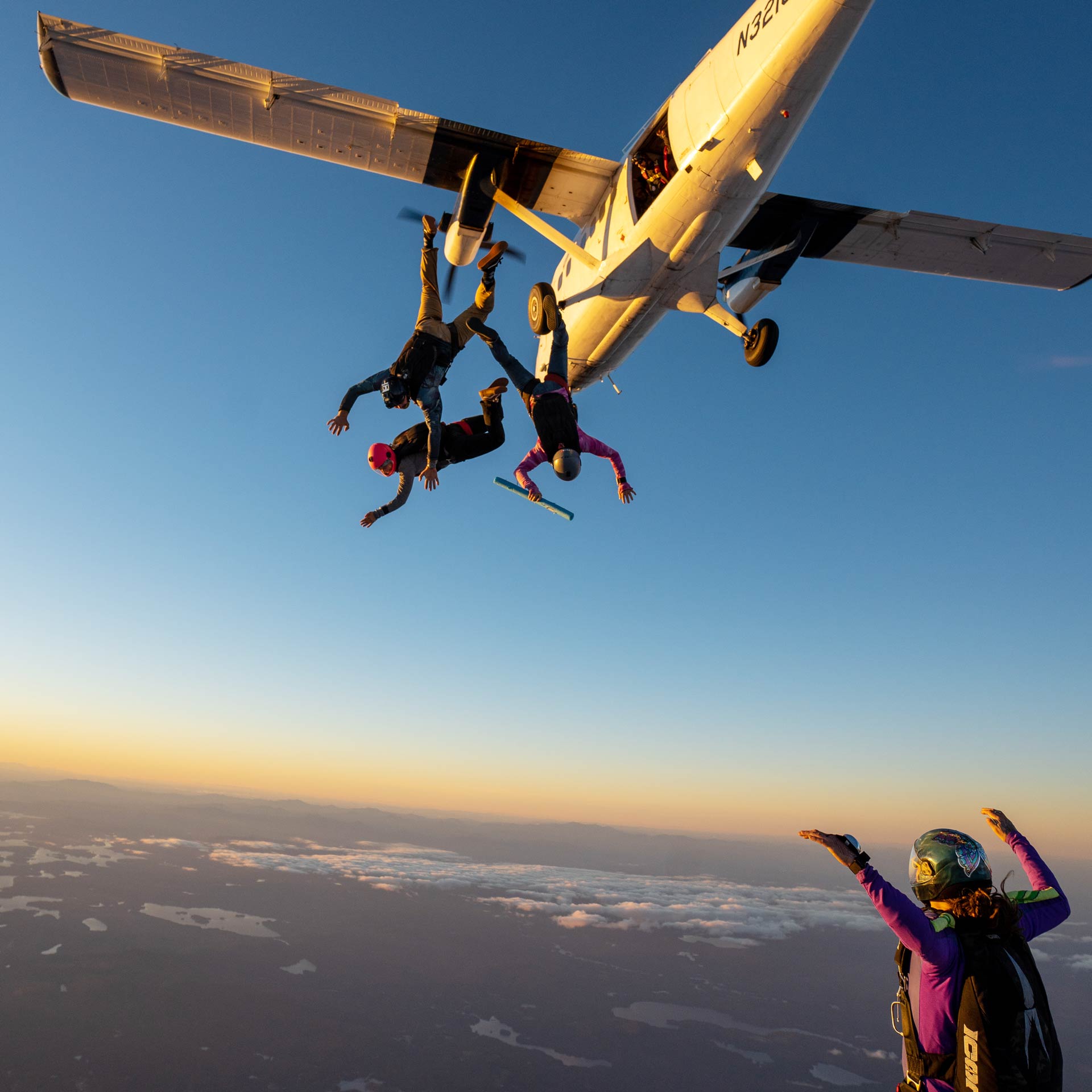
D-License
What’s Required for a Skydiving D-License?
The D-license is the most prestigious of all with a 500 skydive minimum! At least three hours of total free fall time (heck yeah!) and passing the USPA written exam. In order to receive the D-license, you must complete at least two of the following:
- Night jump
- Landing within 7 feet of a target center on at least 100 jumps
- Been in a canopy formation of at least a 3-stack, completing a full rotation
- Undertake an intentional water jump
- Successful 100 formation skydives, 25 that must have at least 8 skydivers
What Can I Do After I’m D-Licensed?
D-license holders are able to obtain their tandem rating! They can also earn a pro-rating, enabling them to jump into events such as sporting games or festivals.
While it seems like a long time coming to get your D-license, it’s a lot of fun along the way! When you pursue skydiving, it becomes more than a weekend activity and turns into a lifestyle. The sport’s community is the most supportive of all and the advancement through the sport is an enjoyable and constant learning experience.
Ready to get your skydiving license? Start by booking your tandem today (and starting your count to solo status: 1 down, 24 to go)!
Categories:
You May Be Interested In:
Enter to Win a Free Skydive
Join our email list and enter to win a free tandem skydive. Drawings in April and December; winner announced on social media.
You’ll get a $10 coupon toward a tandem just for signing up! Must be 18 and under 240 lbs to jump.
*By submitting this form, you are consenting to receive marketing emails from Skydive New England, 40 Skydive Lane, Lebanon, Maine 04027. You can revoke your consent by using the SafeUnsubscribe link located at the bottom of every email. Emails are serviced by Constant Contact.
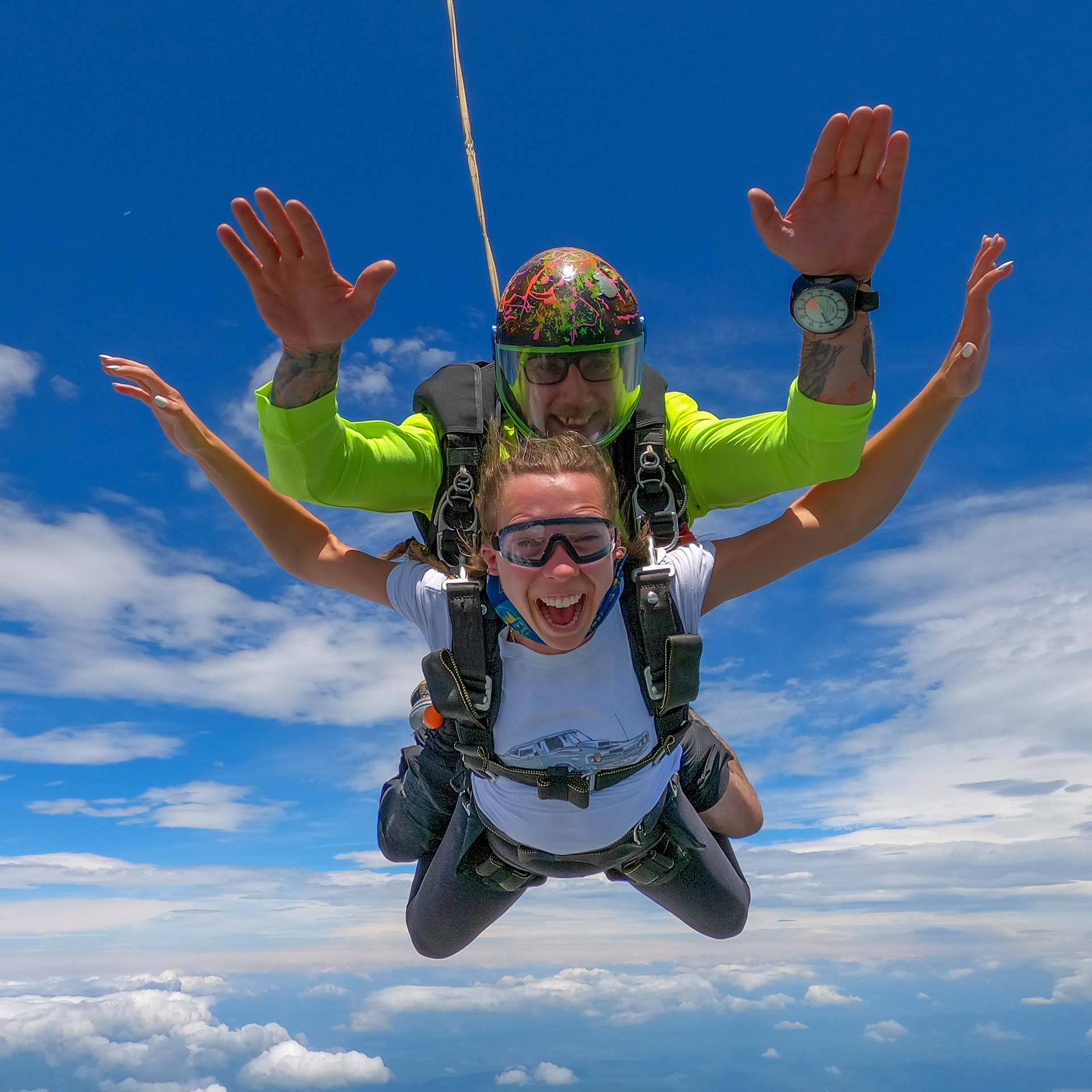
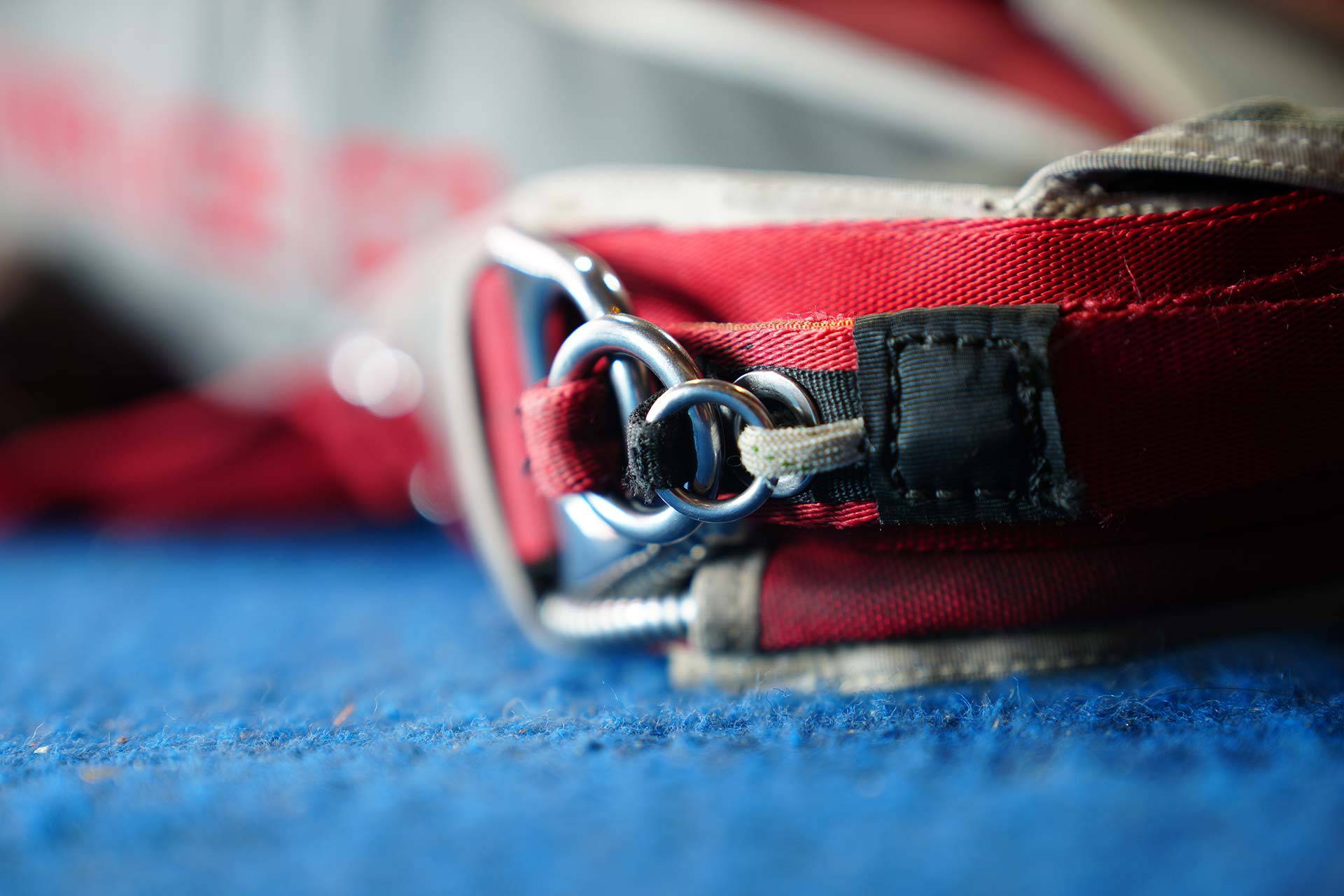
Even More Wicked-Fun Than It Looks!
Come see why the biggest DZ in New England is also the best.
